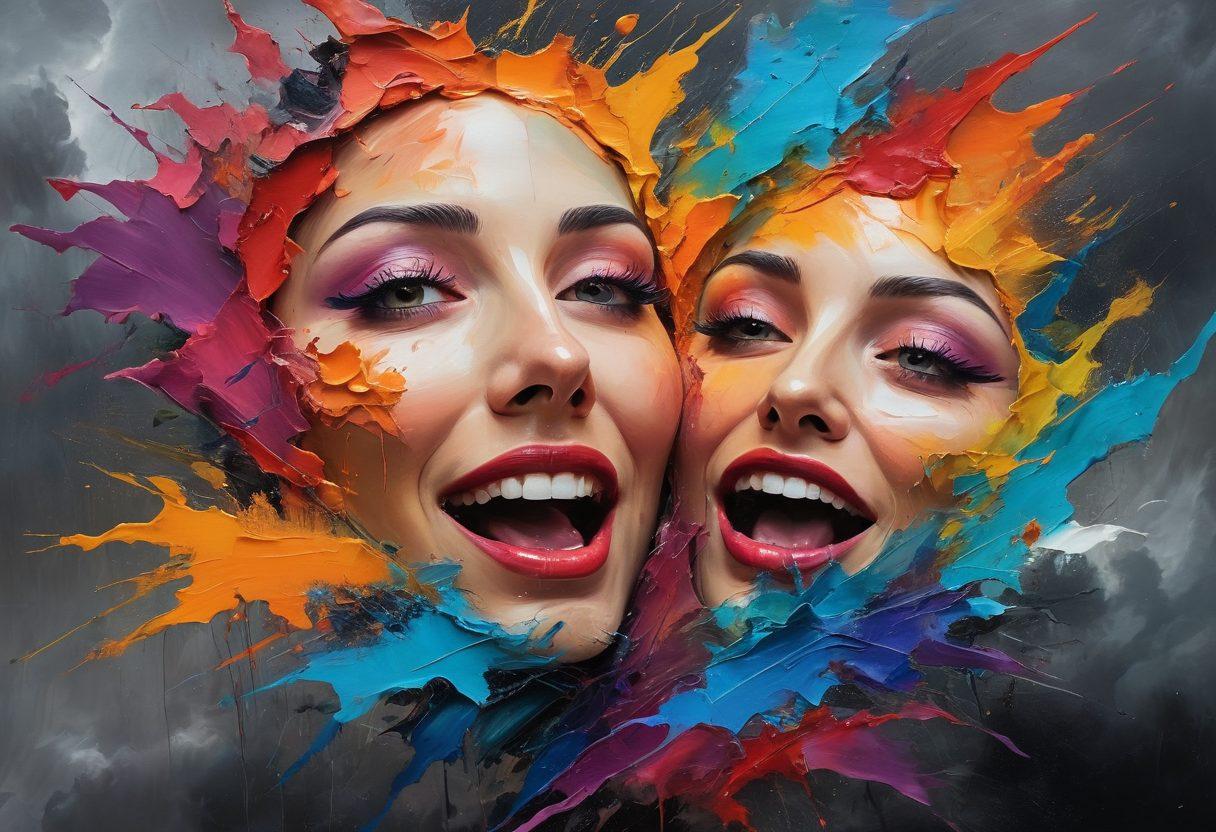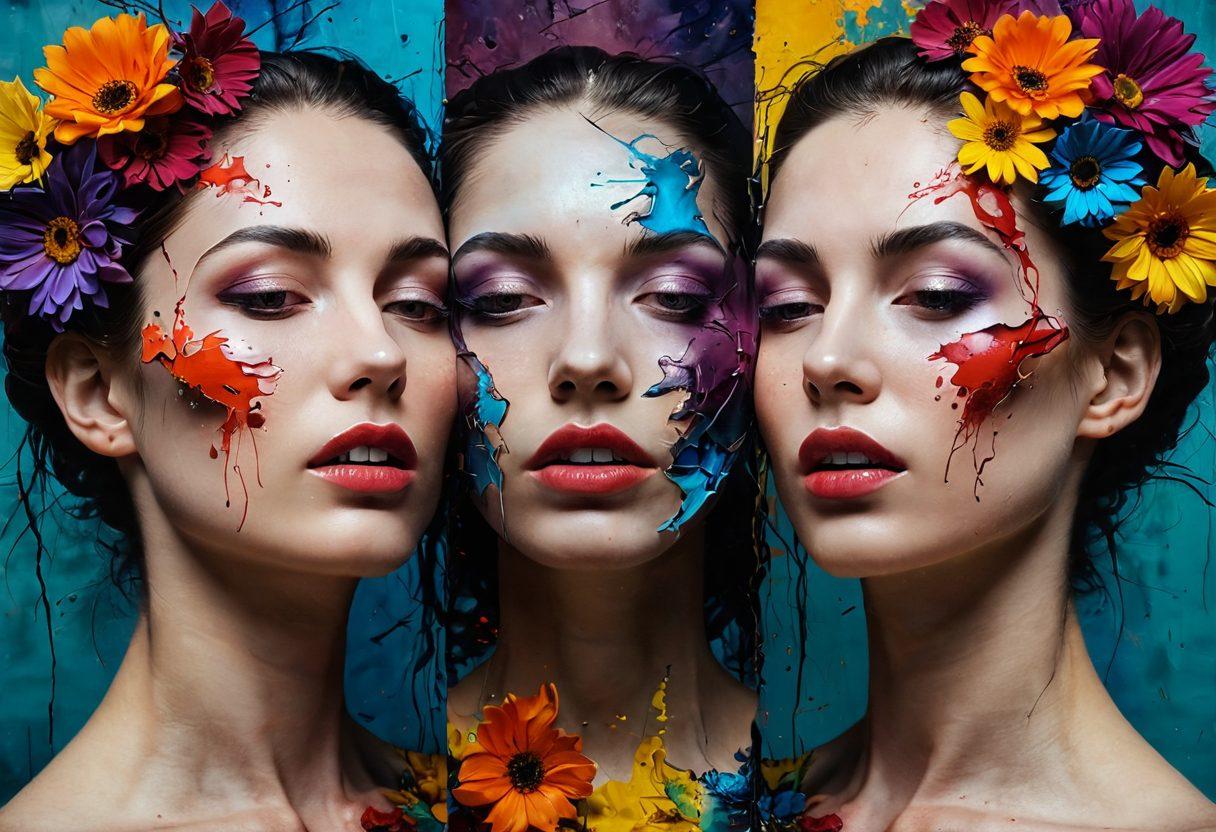Exploring the Fine Line Between Joy and Pain: The Evolution of Torture Art
In the realm of creative expression, few genres are as provocative and multifaceted as torture art. What draws us to this intersection of joy and pain, where the boundaries between happiness and suffering blur? It's a compelling exploration that prompts our curiosity and evokes deep emotional responses. As we peep behind the curtain of this unique art form, we uncover the intentions of artists and the societal narratives they weave. This journey through the canvas of pain and pleasure exhorts us to reflect on our own experiences and the world around us.
Torture art is often misunderstood—peering into its depths reveals a rich tapestry of emotional art that ranges from the surreal to the macabre. Artists use their brushes as swords, battling societal norms while inviting audiences to face discomfort and duality. Picture modern artists portraying the gory and grotesque with elegant strokes—a juxtaposition that brings a cathartic release to both the creator and the viewer. Could it be that through anguish, we find our joy? This is a question many have pondered, for art oftentimes mirrors the complexities of our very existence.
As we delve deeper, the narrative aspect of performance art and experimental art takes center stage. Think of avant-garde performances that challenge our sensibilities, incorporating elements of dark humor and reflective discomfort. We are compelled to ask: what is truly inside the minds of those who create such disturbing art? Perhaps their intent is not to shock, but to invite us on a journey of transformation—a path where suffering becomes a catalyst for enlightenment and understanding. Such performances create an interaction that is both intimate and revealing, stripping away our facades and exposing vulnerabilities in the process.
Art is a powerful vehicle for exploring themes of suffering and joy, encapsulated beautifully in the realm of symbolic art and thematic art. Artists squander no time in confronting reality; they draw upon socio-political issues to craft statements that resonate deeply with their audience. Yet, amid the chaos of their creations, there is often an underlying message of hope and resilience. This duality of happy art emerging from the chaos of emotional turmoil leads to a creation of surreal and abstract art that stimulates thought and invites our own interpretations. Just as an abstract painting speaks differently to each observer, torture art stirs within us a kaleidoscope of emotions that can simultaneously elicit laughter and tears.
Ultimately, we arrive at a point of understanding that artistic expression is not simply about beauty but rather about delving into the human experience—a shared tapestry painted with our collective memories of joy, sorrow, love, and loss. It is through this expansive lens of transformative art that we are reminded of the importance of embracing life in all its shades. So, next time you encounter the startling realm of torture art, remember: it’s not just about the pain; it's about finding pleasure in the painful and, perhaps, joy in the suffering. Can we then accept the dark alongside the light, and find beauty in the chaos?
From Pain to Pleasure: The Transformation of Emotional Expression in Torture Art
Art has the power to evoke strong emotions, and nowhere is this dichotomy more starkly visible than in the realm of torture art. As society has evolved, our understanding and interpretation of pain have shifted, with artists blurring the lines between joy and agony. Why is it that something so disturbing can also feel so captivating? This exploration into the transformation of emotional expression in torture art invites us to delve deeper into an emotional spectrum that encompasses both the disturbing and the beautiful.
Imagine standing in a gallery, confronted by a piece of art that makes your stomach churn yet captures your curiosity. This is the essence of creative torture—a paradox that challenges our perceptions. Artists often wield their brushes, cameras, or creations not just to depict the world as it is, but to explore the darker recesses of the human psyche. Think of it as symbolic art that articulates our collective fears and discomforts, allowing us to confront elements of our reality that we often choose to ignore. It prompts the question: can we find joy in unease?
The transition from torture to pleasure in artistic expression is also a tale of cultural evolution. Historically, many art forms such as gothic art and macabre art reflected societal fears, individual trauma, or socio-political issues in profoundly visceral ways. In contrast, modern art has adopted a more conceptual approach. Artists are not just portraying pain; they are exploring its transformative power, inviting us to contemplate the cathartic experience of witnessing suffering through a unique, innovative lens. This raises a thought—how can we redefine our relationship with discomfort in the contemporary art world?
Performance art and disturbing art challenge audiences to engage with theme and narrative through an embodied experience. This interactive facet adds depth to the emotional art experience, further igniting our curiosity and inner dialogue. Imagine an avant-garde artist using their own body to illustrate the fine line between ecstasy and agony. In this way, the viewer becomes a participant, questioning the very limits of what is acceptable and what brings pleasure or revulsion. Isn't this turning of the lens what makes art so powerful and subjective?
Ultimately, the bridge between pain and pleasure in torture art reflects our complex, often contradictory human emotions. Whether through surreal art, abstract concepts, or provocative installations, we discover ways to express our vulnerabilities and celebrate our resilience. Embracing the bizarre and toying with dark humor invites audiences to rethink harsh realities, transforming how we perceive challenging themes. As we navigate this emotional landscape, we must ask ourselves—how can we harness the cathartic qualities of art to heal, provoke discussion, and inspire change? The journey from pain to pleasure may just lead us to a richer understanding of existence.
Beyond Boundaries: The Provocative Journey of Torture Art in Modern Creative Landscapes
Art has always pushed boundaries, but what happens when it flirts with the unsettling concept of torture? Welcome to the provocative journey of torture art, a genre that blurs the lines between joy and pain. In today's artistic landscape, creators are not only expressing beauty and happiness but are also delving into the depths of human suffering and emotional turmoil. As visitors step into modern galleries, they often find themselves navigating the complex interplay between alluring beauty and disturbing realities, which raises the question: Does exploring pain through art make us more aware or merely desensitized?
Imagine walking through an art exhibit where every piece tells a story of psychological tension—a juxtaposition of emotions that titillates and unsettles. Pieces that belong to the realm of dark art and emotional art challenge the viewer's perceptions and beliefs, often invoking an array of feelings that can be both cathartic and disturbing. A common quote that reverberates through the space is, "Art is the lie that enables us to realize the truth." This sentiment captures how unique art can depict misery while also allowing us a glimpse into the profound joys that emerge from overcoming suffering. Is it possible, then, to find a sense of happiness within the embrace of pain?
In contemporary art, creators are leaning towards innovative and avant-garde expressions of suffering, like performance art that visually narrates the experience of trauma. This form of artistic expression not only evokes visceral reactions but also builds a bridge between the artist and the audience. As they witness such surreal art, viewers begin to reflect on the deeper themes behind the artwork. This journey often leads to the uncomfortable task of grappling with our own vulnerabilities and fears. The act of viewing can provoke, opening a dialogue about societal issues and individual struggles that lie beneath the surface. How do we confront our fears when they are presented in a visceral, expressive art form?
As we delve into the world of disturbing art and socio-political art, we discover artists who harness their creativity to shine a light on tyranny, war, and social injustices. Many of these artists harness macabre and gothic aesthetics, incorporating elements that might seem gory or bizarre, thus emphasizing the struggles faced by marginalized communities or the brutality of human experiences. The emotional impact of such thematic art can incite conversations and inspire activism, creating transformative art that not only comments on adversity but also fuels societal change. When faced with this kind of artistic torture, do we simply become spectators, or do we feel compelled to participate in their narrative?
Exploring the correlation between happy art and torture art is an adventure into the duality of human existence. Art can be a powerful tool for healing, and when artists dive into creative torture landscapes, they often tap into the darkness to ultimately reveal that there is light to be discovered within. The best examples of this transformative art leave viewers with a sense of resolution, challenging them to embrace their own experiences—both beautiful and painful. As you explore the world of abstract and conceptual art, ask yourself: how does your understanding of art change when you see it as a reflection of both joy and pain? Through this lens, torture art becomes more than just a disturbing visual; it transforms into a narrative of resilience—an invitation to re-examine what it means to feel alive.


